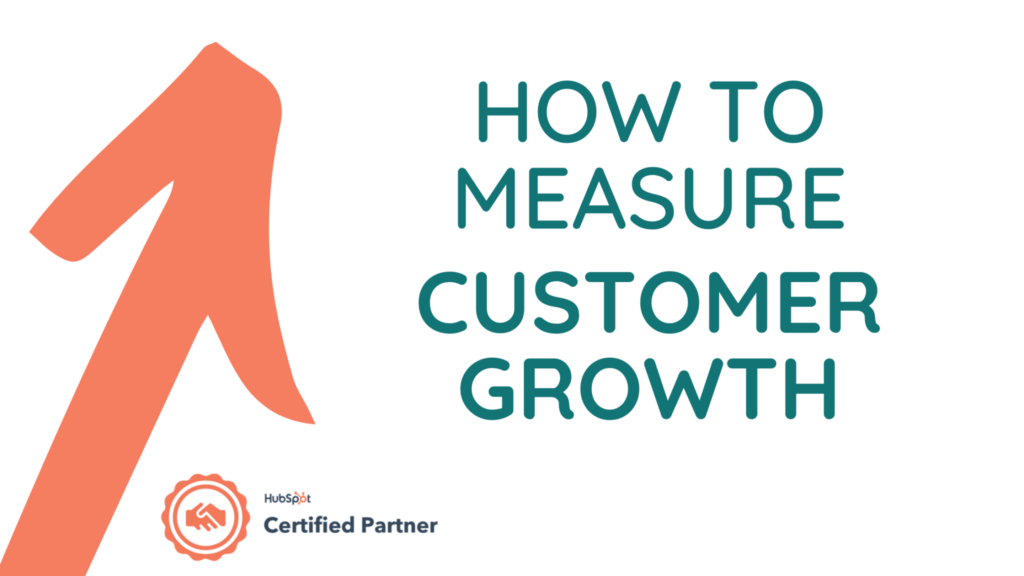How to Measure Customer Growth (From a Chattanooga HubSpot Agency!)

Written by
Good Team
Created on
January 24, 2022
Thinking about how to measure customer growth? Wondering how to get started? Measurements are critical in business. The fundamental objective of marketing is to grow the number of customers engaging with your products or services. You can never fully know if the money, time, and effort you are pouring into your marketing strategies have a tangible impact on your business’s growth unless you know how to measure the effects of those strategies. Knowing this is especially important in the ever-changing marketing world, where one method that worked for your target market yesterday may not be as effective today.
Successful businesses tend to pay close attention to their marketing efforts from a data perspective. These organizations measure nearly everything, so they garner a wealth of information to calculate the effectiveness of their marketing and business practices.
Having the right data and knowing how to use it lets you evaluate your strategies and move quickly between them to ensure that your sales team stays ahead of the competition.
What are Sales Metrics?
Sales metrics are data points that arise from closely analyzing and recording your business processes. They can apply to individuals, teams, or the entire organization, and companies can use this data for various purposes. Sales metrics are powerful tools for measuring customer growth resulting from your marketing campaigns.
The true beauty of these metrics is that they provide the specificity needed to nail down exactly where your organization’s strategies are succeeding and where they may need to be revisited. However, there can be hundreds of sales metrics being reported at any given time. You must know what statistics and data will help determine if you are getting an adequate return on your investments.
How to Measure Customer Growth
Many metrics can provide real value to your organization. However, we’ve chosen to highlight three metrics we consider critical to understanding whether or not your marketing strategies are paying off. They are listed below:
- Percentage of Revenue from New Business
- Market Penetration
- Cost of Selling
Now, we’ll break these metrics down to understand exactly what they are telling you and how they are beneficial to you and your business.
Percentage of Revenue from New Business
This metric highlights the total amount of earnings that you’ve generated from new customers every quarter. It is calculated by simply dividing your total revenue by the revenue generated from new customers who have not previously interacted with your business.
To use this metric to draw conclusions about your marketing efforts, compare this percentage for the quarters before adopting a new marketing strategy with the periods after. If your marketing strategies are successful, you can expect more customers to be converted, and thus the metric should be higher.
Market Penetration
Market penetration looks at what percentage of the total number of potential customers are your organization’s customers. It is calculated by dividing the number of all possible customers by your specific business’ number of customers.
This metric lets you know how much of an impact your organization has on the target market. As with the previous metric, if your marketing efforts are successful, you should expect this percentage to be higher than in previous years. If this number were higher, it would mean that your marketing strategies were successfully expanding the number of new customers in your business.
Cost of Selling
Finally, this metric measures the total amount of money invested in getting your product or service sold. This measurement is calculated simply by adding up the various costs associated with marketing and selling your product or service. With a successful marketing strategy, we would expect the cost of selling, especially as a percentage of total revenue, to go down. This result means that your marketing efforts increased both your efficiency and profitability.
The Power of A Sales Metrics Dashboard
The measurements discussed above can be very beneficial, but no metric is helpful if you cannot see it. A sales metrics dashboard such as the one provided by HubSpot can solve this problem by providing visibility into these and many other kinds of metrics. Dashboards like this can provide all of the data you need in one convenient place, allowing you to directly and easily measure customer growth stemming from your marketing efforts. This feature can enable you to ensure that you invest your time and money in marketing strategies that provide practical benefits and development for your business.
If you’re looking for a team that will help you build a successful marketing strategy using HubSpot and provide accurate metrics to understand how that strategy is growing your customer base, contact Good Team and get started.
Help Me HubSpot
Get Your Free DIY 40-Point HubSpot Audit with Videos!


